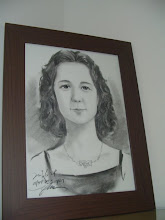asifa majid
"..there may be key ways in whic languages differ in both the categorization of the body into parts, and in how these parts are related to one another."
"Is categorization the same between individuals, either as a result of innate concepts, or regularities in the perceptual array? Or, is human categorization arbitrary--a matter of cultural or linguistic convention?" Dr. Riddle said "it's obvious that it's some of both."
"Unlike many other objects, the body is the same around the world ... So, we might expect that categories for parts of the body would be the same everywhere. But PUnjabi speakers show some interesting differences in how parts of the body are categorized in comparison with other languages in this volume, suggesting that body part categorization is not universal."
In Punjabi, "there is a category of internal body part which has no anatomical correlate."
"The use of multiple terms is probably a function of the pervasive multidialectism of PUnjabi speakers (Bhatia, 1993) which is discussed more in the next section."
"There are 2 grammatical genders in Punjabi: masculine and feminine...Where a body part term freely occurs with either the masculine or the feminine form...[both terms are given]."
"masculine gender represents a bigger size (both actual and speaker's perception) than the feminine." (But leg is feminine and it's very large)
There are 5 different words for face. "The terms are extensionally equivalent covering the oval-shaped area on the fornt of the head not including the neck or the ears. But the term muu difefrs here in that it is ambiguous in reference between the whole 'face' and just the 'mouth'...Despite its ambiguity and the lack of ambiguity associated with other terms for face, muu is the common word used in everyday speech to refer to face."
"Buttha (masculine) and butthi (feminine) are used with negative connnotation...used to refer to someone sulking or in a bad mood." Can be used as a term of endearment.
"The use of masculine indicates that the face is even bigger, and correspondingly that the emotional state of the eprson is more intense."
"Marshellese, an Austronesian language, was the only example in Brown and Witkowski (1981) found in a sample of 118 languages which equates the pupil with astar. To this sole example, we can add PUnjabi, as well as Hindi and Urdu, as examples of languages which use the expression 'the star of the eye' to refer to the pupil."
"A distinction is made between the living body and the dead body, meiyet."
There are many Hindi-Urdu loanwords for body parts in Punjabi.
"There are 2 terms to refer to the shoulder--moDa and kenda. MoDa can refer to the side of the shoulder, whereas kenda cannot So, while it is possible to describe bumping into someone as MoDa marna (lit. 'shoulder hit')," you can't say kenda marna. "MoDa does not exclusively refer to the side of the shoulder, however as when things are carried on the shoulder they can be described as moDe te cuk (lit. shoulders on carry') or kende te cuk (lit. 'shoulders on carry'), suggesting that both terms can be used to refer to the shoulder as a whole." Asher says they refer to the same thing, but aee form different languages.
"There is large variation in the extension people give for the terms referring to the back."
"Both fingers are toes are referred to as Ungli, but its primary sense is 'finger' and not 'digit.' There is converging evidence to support this interpretation. First, consultants say that there 10 Unglia, not 20, as would be expected if the term denotes 'digit' and not the 'finger.'
"The clitoris is referred to as the phephondi danna. It is unclear what phephondi means, but danna is used to refer to a single grain of rice, or a single bean, or a single pea." Similar to French.
"The womb is the becce dani 'child pot.'"
folk taxonomy: "The most striking thing about the Punjabi body lexicon for internal parts, is that there is a term for a body part which does not exist taxonomically. The keddi is believed to be an organ which is located at the bottom of the sternum. It is said to be about the size of a small egg, and like an egg oval in shape."
"xiphoid process...folk theory...there is a collective 'delusion' about its new location that is not accompanied by any perceptual evidence....the keddi is believed to exist only in humans."
the splayed hand is a measuring unit
"The 2 emblematic gestures under discussion are "begging gestures"...The single cupped hand is used when there is a direct appeal being made to the person; whereas the dual cupped hands are used when the appeal is being made indirectly via God."
"The term for 'sou' is ru..."
"The ru is incorporeal, while the body is corporeal, so consultants claimed that the ru cannot be a part of teh body."
"Punjabi data suggest that both types of conceptualizations exist side by side: a small set of body parts are conceptualized as forming part-whole relations, namely the limbs; while most other body parts are conceptualized as being in a locative relation."
Sunday, May 24, 2009
body part categorization in punjabi
Subscribe to:
Post Comments (Atom)

No comments:
Post a Comment